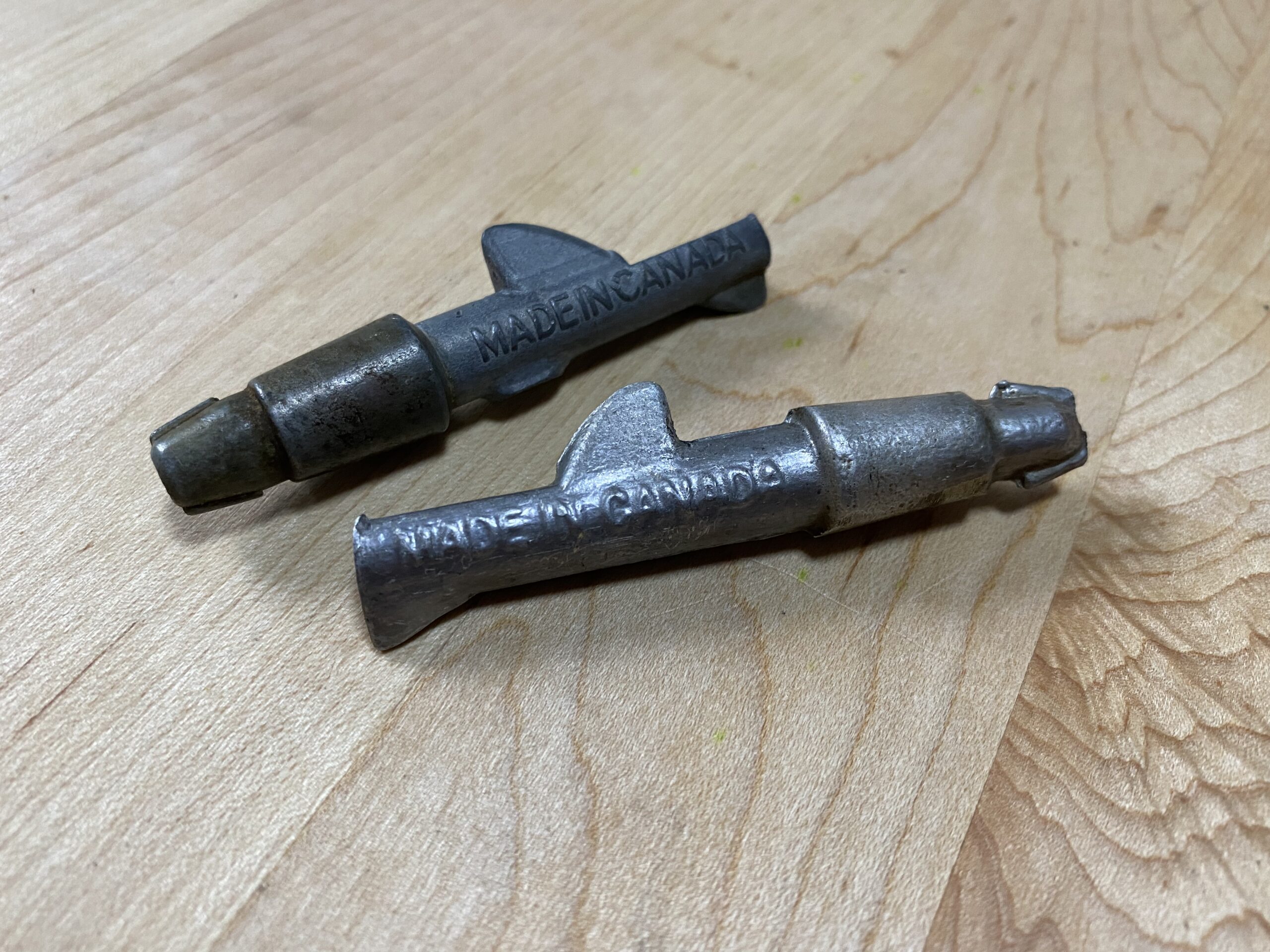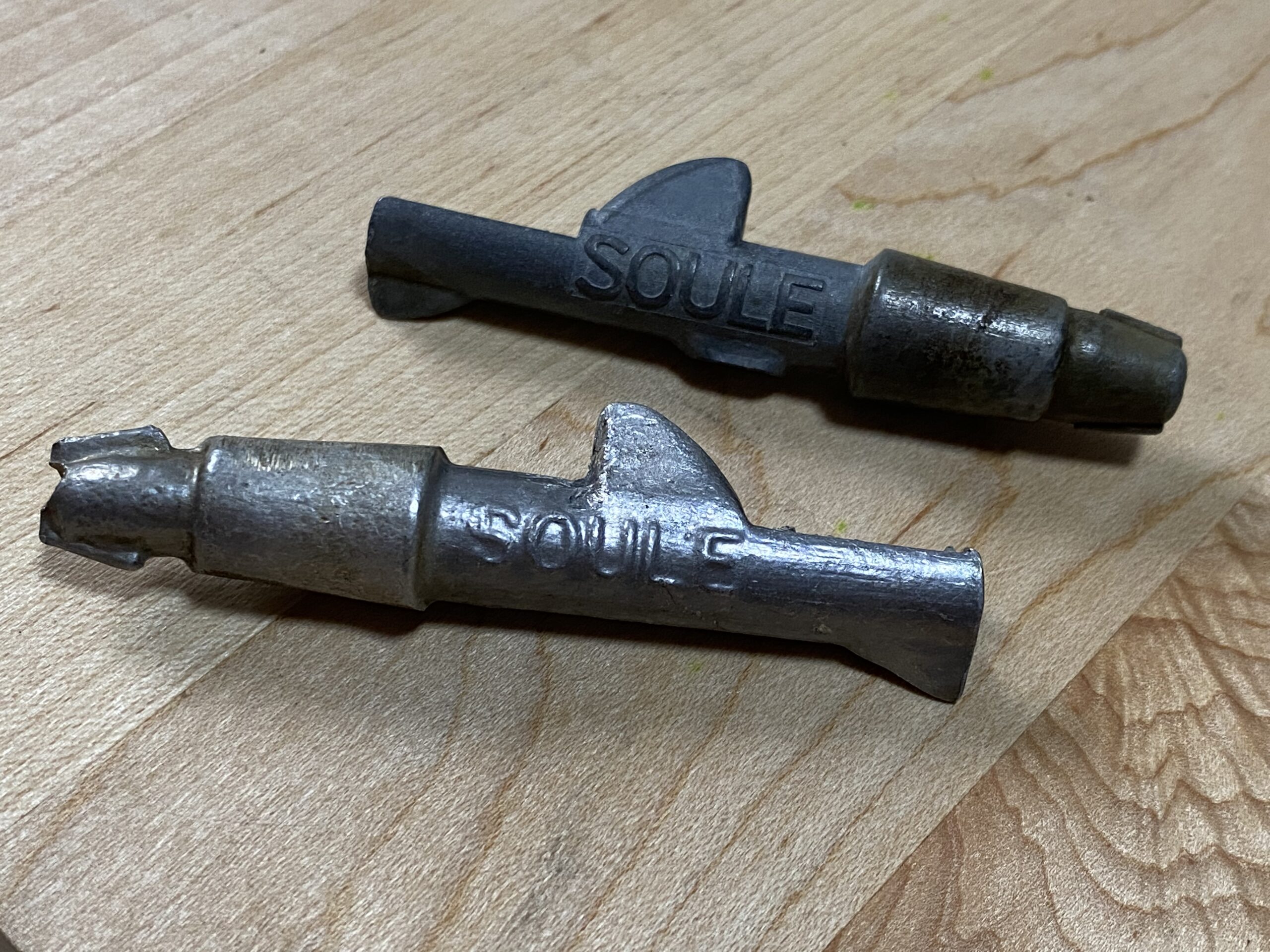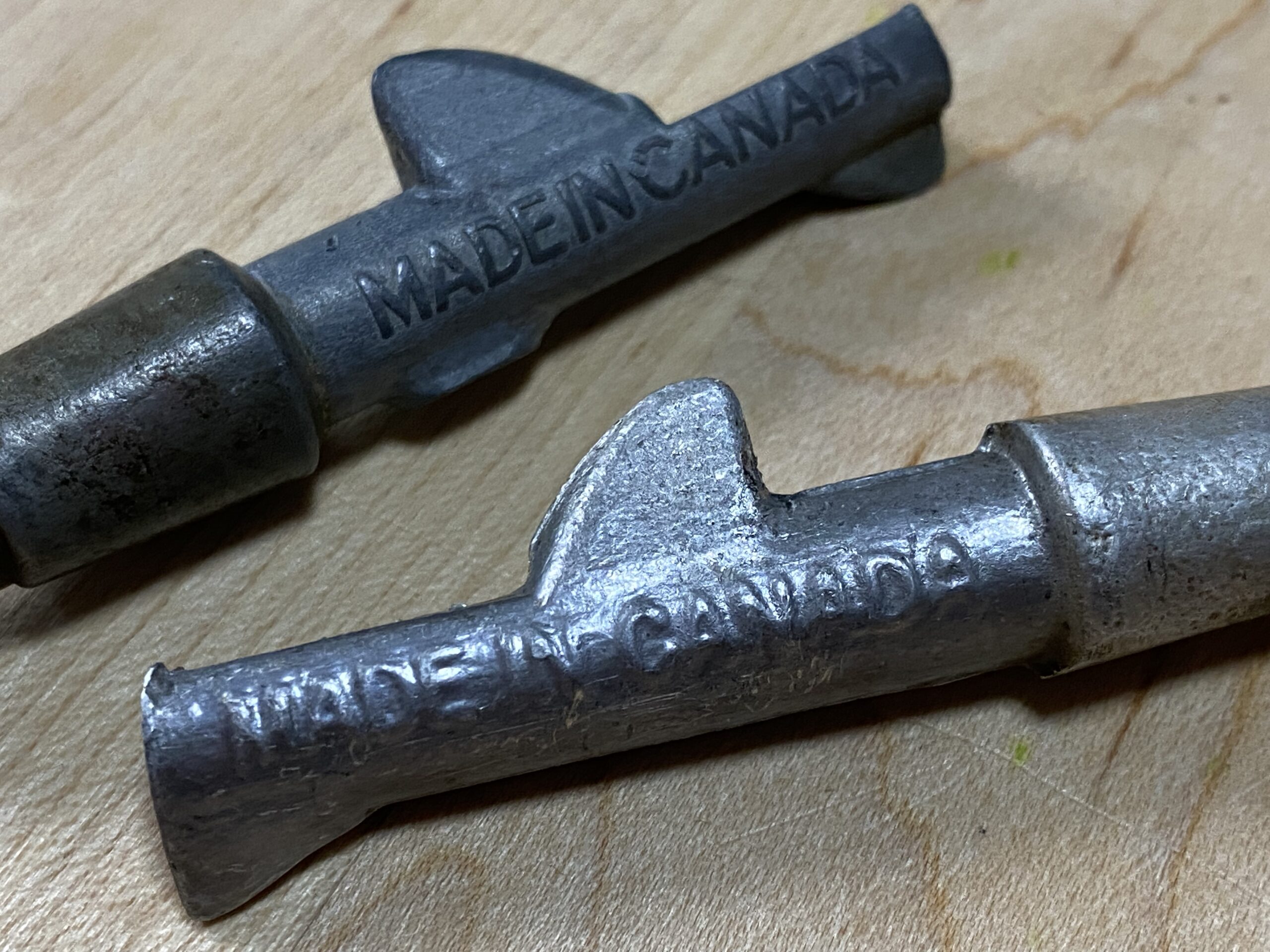Maple Spiles (for tapping trees for maple syrup) Made in Canada – sent in from a reader in Wisconsin!
XRF Test Results for the Maple Syrup Spiles Pictured
Reading #1) Shiny newer looking one
60-second test
Aluminum Based
- Lead (Pb): 223 +/- 17 ppm
- Cadmium (Cd): non-detect
- Mercury (Hg): non-detect
- Bromine (Br): non-detect
- Chromium (Cr): non-detect
- Iron (Fe): 1,870 +/- 146 ppm
- Copper (Cu): 786 +/- 51 ppm
- Zinc (Zn): 1313 +/- 55 ppm
- Antimony (Sb): 22 +/- 10 ppm
- Platinum (Pt): 192 +/- 36 ppm
- No other metals detected in consumer goods mode.
Reading #2) Gray older looking one
60-second test
Zinc-based
- Lead (Pb): 188 +/- 104 ppm
- Cadmium (Cd): non-detect
- Mercury (Hg): non-detect
- Bromine (Br): non-detect
- Chromium (Cr): non-detect
- Copper (Cu): 27,100 +/- 600 ppm
- Zinc (Zn): 962,900 +/- 5,400 ppm
- Niobium (Nb): 311 +/- 128 ppm
- Gold (Au): 9,507 +/- 4,998 ppm
- No other metals detected in consumer goods mode.
For those new to this website:
Tamara Rubin is a Federal-award-winning independent advocate for consumer goods safety and a documentary filmmaker. She is also a mother of Lead-poisoned children. Tamara’s sons were acutely Lead-poisoned in August of 2005. She began testing consumer goods for toxicants in 2009 and was the parent-advocate responsible for finding Lead in the popular fidget spinner toys in 2017. Tamara uses XRF testing (a scientific method used by the U.S. Consumer Product Safety Commission) to test consumer goods for toxicants (specifically heavy metals), including Lead, Cadmium, Mercury, Antimony, and Arsenic. All test results reported on this website are science-based, accurate, and replicable. Items are tested multiple times, to confirm the test results for each component tested and reported on. Please click through to this link to learn more about the testing methodology used for the test results discussed and reported on this website.

Never Miss an Important Article Again!
Join our Email List





Thanks for testing these! I’m surprised the shiny one tested with a higher lead content. I expected it to be the opposite!
Oh my gosh! Thank you for commenting – I was looking everywhere for your e-mail!
T
This is just a random thought, but have you considered trying to have a database built? Like a big registry where items testing positive for high levels of lead and cadmium are catalogued, with photos, listed levels, year of production, etc, all along with a tagging system. Maybe also stuff which is actually safe, but which could easily be conflated with unsafe items, for clarification.
Tags could denote what kind of material it is, major colors, if it’s clear or opaque, if there’s a print motif (and a tag denoting what kind of motif), branding, any markings, etc, etc.
This way, someone could open a search form, select tags that apply for the item they have, and then look through the returned results to see if they can find an entry that matches theirs. If they find nothing, they could look at a guide that tells them how to properly test the kind of item that they have, and they can submit an entry of their own for review. Possibly also a counter for how many times a positive result has been submitted for an item, as well as how many have had low or negative results.
I’m no programmer or entrepreneur or anything, so I couldn’t really contribute much of anything to such a project, but I think it would be an amazing asset to have, and it would let people more easily find out which cups or cookware of theirs is safe, which should maybe just be locked up in a display case with a warning label, and which are downright hazardous and without any practical or collectible value, and thus best disposed of.
This website is actually a searchable database with tags (at the top of each post) and test results for items listed. There are many different search functions here & this video shows you how to efficiently search the content:
https://tamararubin.com/2020/12/how-to-use-the-lead-safe-mama-website-video/